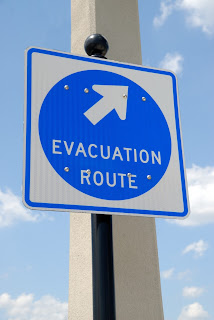Back in November, portions of California were impacted by
the devastation of wild fire, forcing individuals out of their residence to safety
and shelter. Friends and family-members
of mine who live those areas reached out to inform us they were safe and okay. They relocated to hotel rooms while the
evacuation orders were enforced. Part of
the conversation with them included concerns about the unknown of experiencing
the inevitable. The loss of personal items and enduring the additional expenses
of hotel rooms, especially if they’re unable to return to their home. Thankfully everyone safely returned to their
apartments. Although they returned to smoke
damage on furniture, beds, and counters, in addition to other personal items. Those who had renters insurance were not only
able to replace damaged personal property, but were also covered for the
additional living expenses during the mandatory evacuation.
- Part C - Personal Property Coverage: The renter’s insurance policy provides personal property coverage up to a specific dollar amount. The minimum amount of coverage is commonly $10,000 to $15,000 depending on the issuing company; however this amount can be increased based on the value of personal contents you own. Personal contents includes mostly everything in an apartment, condo, or home that is owned by an individual and isn’t part of the building structure. So in theory, if someone picked up an apartment, condo, or home and shook all of the contents out of it, everything that fell out would be the personal property. Examples include bedroom sets, furniture, electronics, clothing, personal tools, and dishware. Keeping an inventory of belongings is a recommended practice that can estimate the value of your belongings, maintain a record of those belongings and determine the amount of coverage to obtain under an insurance policy. Often time individuals will purchase a renters policy without understanding these coverages and as a result have an insufficient amount of insurance. In other, rare, cases individuals might have too much insurance compared to the value of their belongings, ultimately overpaying for an amount insurance not needed.
- Part D - Loss of Use / Additional Living Expenses: This portion of the insurance policy provides coverage when someone is unable to access their normal living space as a result of a loss that has made the living space inhabitable, or access to the apartment, condo, or home has been denied due to extenuating circumstances. For instance a mandatory order or condition that doesn’t allow them to enter their normal living space. Examples of this might be a gas leak or fire in a neighboring complex where roads are closed and denies entrance to the living space. This is the portion of the insurance policy that covered the costs of the hotel room for my friends in California during the mandatory evacuations. This coverage types can work in various ways. Commonly there may be a fixed amount like $5,000. It can also be number of months, like 12 months for example. This coverage type may also be a percentage of personal property coverage such as 50%. Thus, if personal property is $10,000, the coverage amount for additional living expenses is $5,000. It’s important to understand how additional living expenses are covered. This is another important area of the insurance policy that needs careful review and consideration when obtaining coverage. Loss of use can be short-term due to something like an evacuation order, but can also be long-term for other circumstance such as fires, water-leaks or other types of damage to a living space.
- Part E – Personal Liability Coverage: When individuals think of renters insurance their immediate thought is to protect their belongings. They usually don’t realize that renter’s insurance provides coverage for liability. The coverage amount starts at $100,000 and can be increased accordingly. Liability coverage will provide coverage in the event someone is held liable for damages. Damages include physical property damage, or injuries. The coverage is for the policyholder and anyone who is living in that same apartment or home. An example of this would be a spouse, children, roommates or family-members living with the policyholder. Liability coverage under the renters, condo and home policy also provides liability coverage outside of the home, meaning it can be used for an event that occurred someplace other than the apartment or home. Liability coverage holds equal importance as personal property coverage as it protects your assets. Assets include your bank accounts, property and even future earnings. Individuals with sizeable assets, or earning potential, can expose those assets to the wealth eroding factor of legal liability. If a person falls victim to a personal injury or other type of lawsuit, after the insurance limits are used up by the insurance company, personal assets are often a target for attorneys. It’s important to understand the amount of liability coverage available under the insurance policy, and verify this amount is sufficient to protect you in the event of a personal liability.
- Part F – Medical Payments: Lastly, we have medical payments. I’ve found a misconception about this coverage among consumers. Specifically about whom the medical payment covers. Medical payments will cover medical expenses if an individual is injured in your apartment, condo or home regardless of fault. Medical payments coverage tends to start at $1,000 and can be increased to $5,000 or higher, depending on the insurance company. Medical payments coverage normally covers smaller claims. For example, if a guests at your home falls and gets a cut and goes to the hospital for stitches. This coverage is important to review and understand, especially if you entertain and have guests to your home.
I hope this brief reading has motivated you to pull up your insurance
policy to review your coverage or encouraged you to look into a renter’s
insurance policy. I enjoy explaining and
reviewing various areas of personal finance.
If I can in any way have a conversation with you about your concerns,
please feel free to reach out and contact me.
